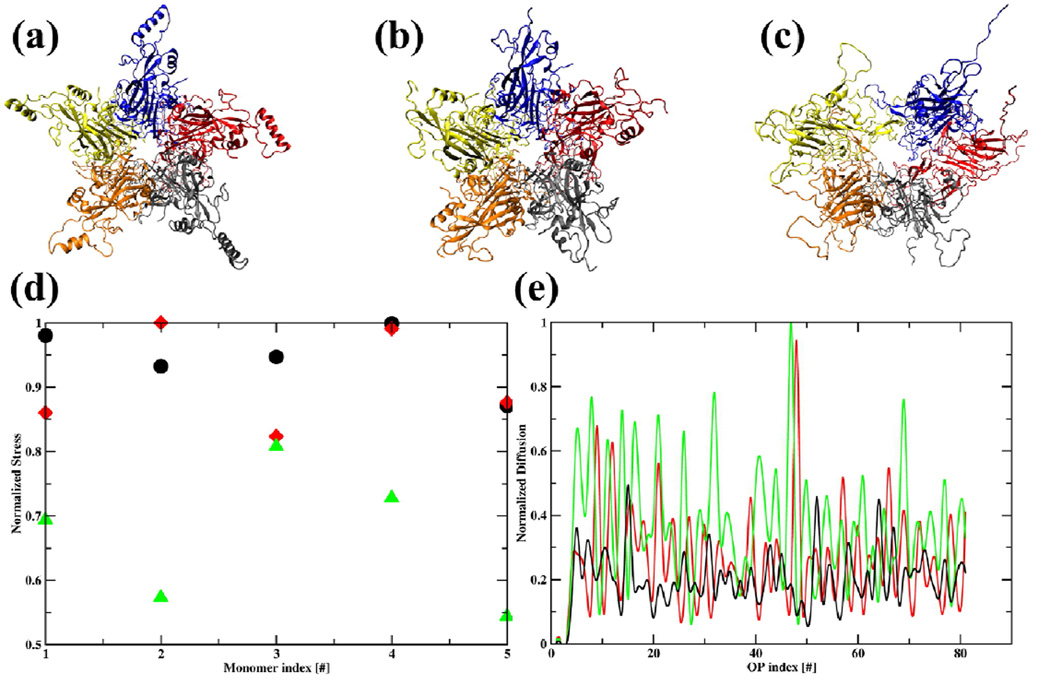Fig. 5.
Snapshots of (a) complete (b) h4-truncated and (c) h2,h3,h4-truncated HPV pentamers after 30ns of DMS simulation showing the first two structures are fairly stable but the third one is unstable and expands extensively. (d) Stress on L1-monomer during pentamer expansion showing system 3 releases ~50% of initial stress while 2 releases a maximum of 10 % relative to the most stable system 1. αβ component of stress tensor for monomer i with volume Ω is , as computed using a continuum theory formulation of virus capsids;50 here j = 1,5. The principal component of this stress tensor with largest magnitude is normalized over the three systems and presented here. (e) Diffusion coefficients computed from OP velocity autocorrelation functions (Eq. 4) versus the 33 OPs used in DMS simulations. Diffusion coefficient for system 3>2>1 for most of the OPs. Thus, the allowed Δt follows reverse order.

